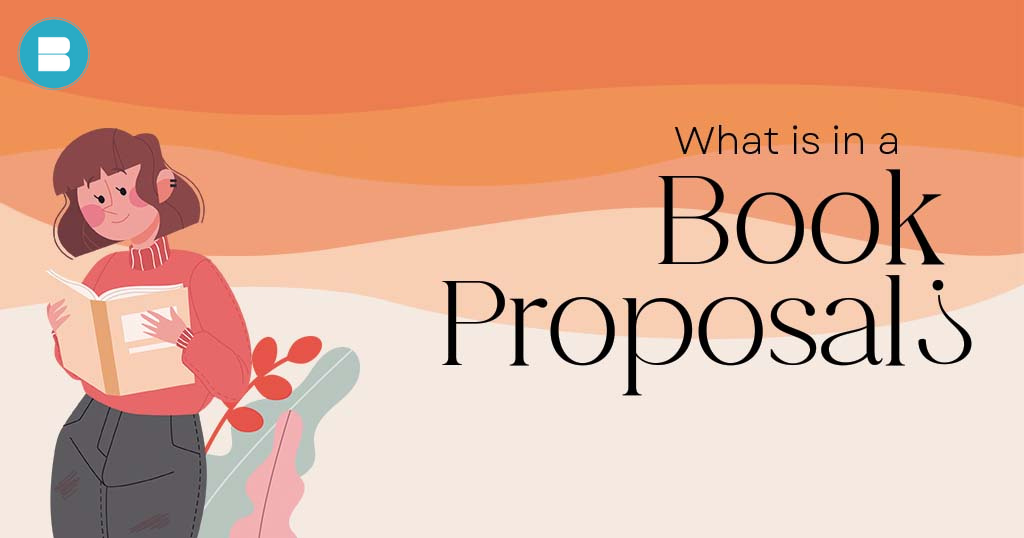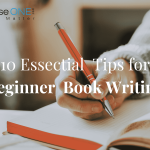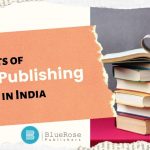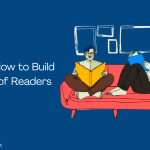If you’ve ever dreamed of becoming a published author, understanding how to create a compelling book proposal is an essential step in the publishing process.
What is a Book Proposal?
A book proposal is a formal document that authors create to pitch their book idea to literary agents or publishers. It serves as a comprehensive outline or business plan for the book, providing publishers with the necessary information to evaluate its market potential, target audience, and commercial viability. A well-crafted book proposal showcases the author’s writing skills, expertise on the subject matter, and the book’s unique selling points.
What is the purpose of a Book Proposal?
The purpose of a book proposal is to persuade publishers that investing in the author and their book is a worthwhile endeavour. It demonstrates to publishers that the book has a clear target audience, a solid market position, and a compelling concept that differentiates it from existing publications. By presenting a well-structured and persuasive proposal, authors increase their chances of securing a publishing deal and getting their book into the hands of readers.
Read: Here’s a list of Top 10 Non-Fiction Books of all time that you must read.
A typical book proposal generally includes the following key elements:
- Overview and Hook
The opening section of your book proposal should provide an overview of your book, highlighting its main concept and unique selling point. This is your chance to hook publishers and pique their interest. Start with a compelling introduction that engages the reader and clearly defines the book’s genre, subject matter, and main argument or premise. Consider incorporating a strong hook or anecdote to captivate the publisher’s attention right from the start. - Market Analysis
Book Publishers want to know if there is a demand for your book and if it has the potential to sell well. In this section, conduct a thorough market analysis that demonstrates your understanding of the target audience and the existing competition. Identify similar books in the market and explain how your book will stand out. Highlight any unique perspectives, fresh insights, or untapped niches that your book will bring to the table. - Target Audience
Clearly define the target audience for your book. Provide demographic information, such as age range, gender, and interests, and explain why this audience would be interested in your book. Consider including data, surveys, or testimonials that support the existence of a market for your book among this target audience. Showing that you know your readership and how to reach them is crucial for publishers’ confidence in the book’s potential success. - Author Platform and Qualifications
Your author platform and qualifications are essential elements that demonstrate your ability to promote and sell your book effectively. Provide an overview of your existing platform, including your social media presence, blog, podcast, or any other relevant channels. Highlight your previous publications, awards, speaking engagements, or any other credentials that establish your authority and expertise on the subject matter. Publishers want to see that you have a built-in audience and the means to reach them. - Table of Contents and Chapter Summaries
Outline the structure of your book by providing a detailed table of contents and brief chapter summaries. This section allows publishers to assess the organization and flow of your ideas. Each chapter summary should succinctly describe the key points, arguments, or stories that will be covered. Make sure your chapter summaries are engaging and reflect the unique voice and style of your book. - Sample Chapters
Include a few sample chapters to provide publishers with a taste of your writing style and the substance of your book. Select chapters that showcase your best work and that are representative of the overall content. These chapters should be polished and ready for publication, demonstrating your ability to deliver a compelling narrative or argument. Sample chapters give publishers a tangible sense of what they can expect from your book. - Conclusion
Crafting a compelling book proposal is an essential step toward securing a publishing deal. By including the main elements discussed above, you can present a well-rounded pitch that effectively communicates your book’s potential and your qualifications as an author. Remember, a book proposal serves as a snapshot of your project and your abilities, so take the time to refine and polish it to increase your chances of success.
In summary, a strong book proposal includes an engaging overview, a thorough market analysis, a clearly defined target audience, an author platform that showcases your qualifications, a detailed table of contents and chapter summaries, as well as sample chapters that highlight your writing style. By addressing these main elements, you’ll be well on your way to impressing publishers and increasing your chances of getting your book published. Good luck!
What is a Book Proposals for Book Adaptated Movies?
A book proposal for a book adapted into a movie serves a similar purpose as a traditional book proposal, but with an added focus on the potential for adaptation into a visual medium. When pitching a book for adaptation into a movie, the proposal needs to highlight the story’s cinematic qualities, market appeal, and the potential for successful translation from page to screen.
What is BlueRoseONE Pitch Deck?
BlueRoseONE Pitch Deck Initiative
Introducing BlueRoseONE’s groundbreaking initiative, where literary dreams meet the silver screen! We are thrilled to announce the launch of our brand-new mediation line, designed exclusively for authors with a passion for captivating visual storytelling. At BlueRoseONE, we believe that every story deserves a chance to shine on the big screen, and we’re here to make it happen.
Imagine a platform where authors can breathe life into their stories through stunning pitch decks, meticulously crafted to enthrall the most discerning production houses. With our innovative platform, authors will have the opportunity to showcase their book’s potential as a visually captivating masterpiece. The pitch decks will artfully bring together words, images, and concept art, creating a compelling presentation that leaves producers hungry for more.
Read: A complete guide on how to create, write and publish a novella in easy steps.
But that’s not all. In this digital realm of creativity, production houses will have exclusive access to authors’ pitch decks, unlocking a treasure trove of untapped literary gems. The decks will provide a tantalizing glimpse into the worlds authors have crafted, enticing producers to embark on exhilarating cinematic adventures. With contact details readily available, fruitful discussions and collaborations are just a few clicks away.
Join us on this remarkable journey, where imagination meets innovation and dreams find their wings. Together, we will transform authors into visionary storytellers and propel their literary masterpieces onto the grandest stage of all—the silver screen.
BlueRoseONE—where dreams are penned, visions are shared, and the magic of storytelling comes alive. Welcome to a world where authors and filmmakers unite to shape a new era of captivating cinema.
Here are some key elements to consider when creating a book proposal for a book adapted into a movie:
- Synopsis: Provide a concise and compelling summary of the book’s story, highlighting its unique and captivating elements. Emphasize the aspects that would make for an engaging and visually appealing movie adaptation.
- Market Analysis: Conduct research on successful book-to-movie adaptations within your book’s genre or similar stories. Identify comparable films and highlight their box office success, critical acclaim, or audience appeal. This analysis demonstrates the existing market potential for book adaptations and helps publishers and producers assess the book’s movie adaptation prospects.
- Visual Potential: Focus on the book’s visual and cinematic elements that would lend themselves well to the big screen. Describe vivid settings, memorable characters, and visually stunning scenes that could be effectively translated into a movie. Include specific examples or excerpts that showcase the book’s visual storytelling potential.
- Target Audience and Demographics: Clearly define the target audience for the book and the movie adaptation. Provide demographic information, such as age range, interests, and preferences. Explain why this audience would be interested in both the book and the potential movie. Demonstrating a pre-existing fan base or a target audience that aligns with successful movie demographics increases the project’s appeal.
- Comparative Analysis: Identify successful book-to-movie adaptations that share similarities with your book. Highlight the similarities in terms of genre, themes, or audience appeal. This demonstrates the market viability and potential success of your book as a movie adaptation.
- Author Involvement: Emphasize your willingness and ability to collaborate in the adaptation process. Discuss any relevant experience, expertise, or insights you can offer to ensure a successful transition from book to film. Your involvement and commitment to the project can enhance its attractiveness to potential producers and studios.
- Marketing and Promotion Strategy: Outline your ideas for marketing and promoting the movie adaptation. Describe how you will leverage your author platform, existing fan base, or other marketing avenues to generate awareness and buzz. This section should showcase your ability to contribute to the successful promotion of the movie.
- Rights and Adaptation Details: Specify the availability of the film rights for your book and any previous interest or discussions related to adaptation. Include information on potential collaborators, such as screenwriters, directors, or production companies, that may be interested in the project. This helps convey the book’s readiness and the potential ease of transitioning it into a movie.
Read: A step by step guide on how to self-publish a book in the UK.
Remember that a book proposal for a book adapted into a movie should focus on the story’s visual and cinematic potential, market appeal, and your ability to contribute to the successful adaptation and promotion. Crafting a compelling and well-researched proposal can increase the likelihood of attracting the attention of producers, studios, and filmmakers who may be interested in bringing your book to the silver screen.

















